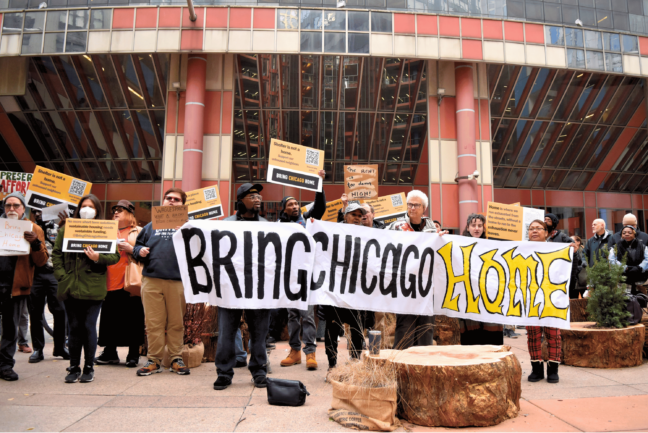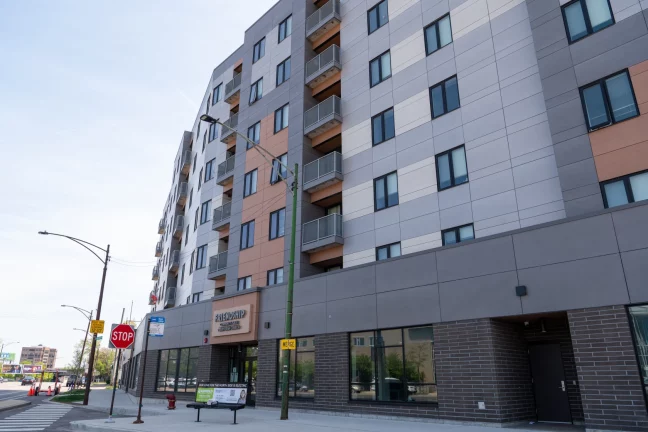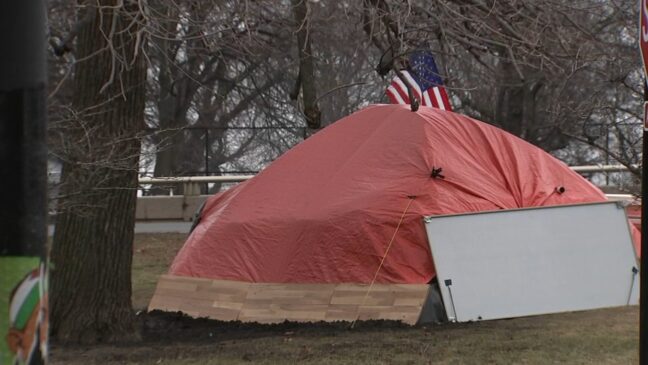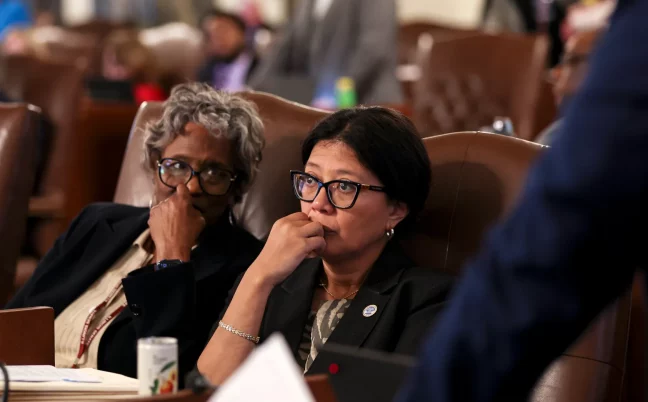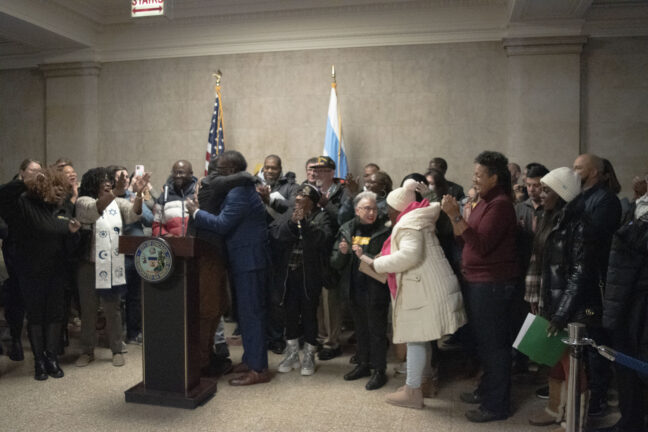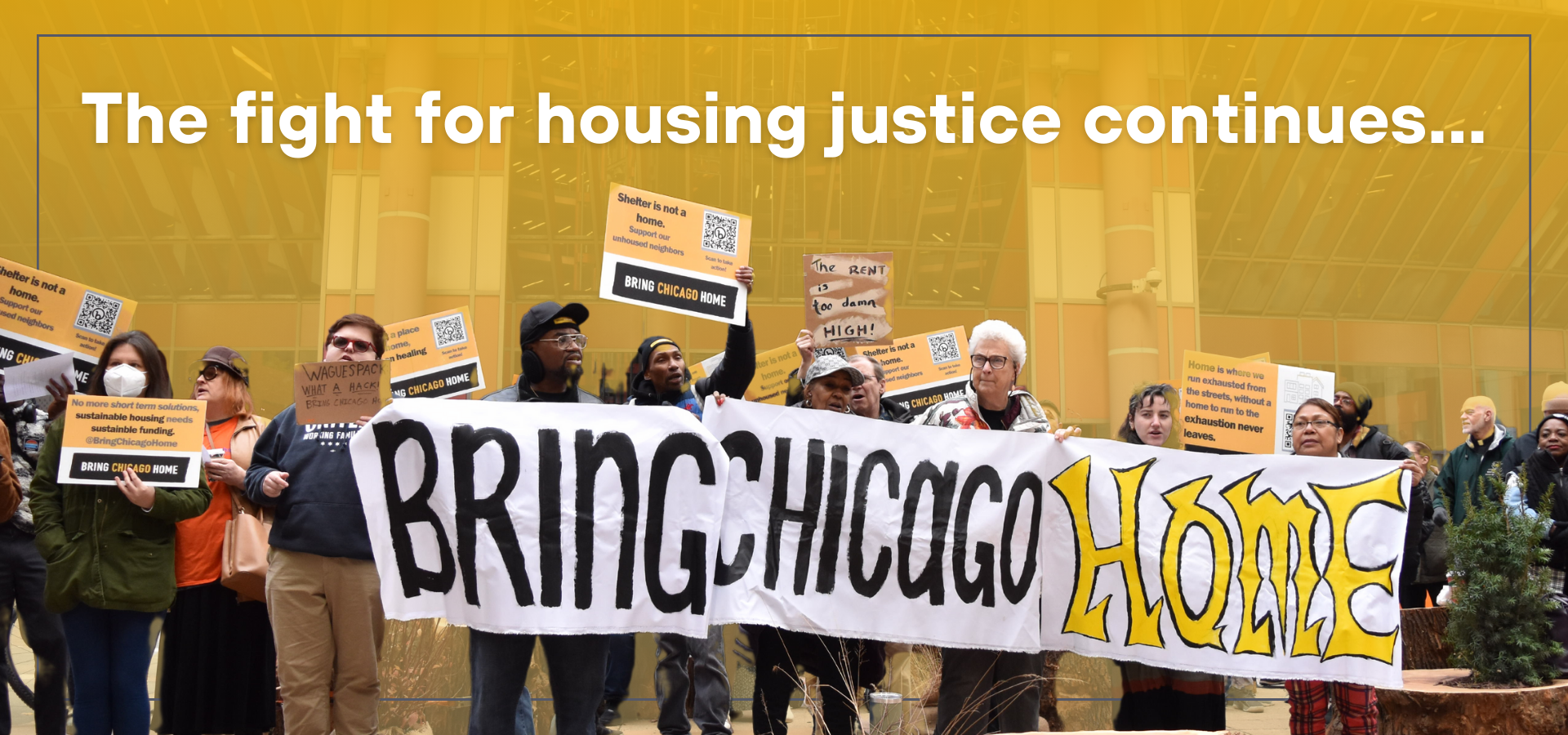
Sharing and building power is how we address homelessness in Chicago.
In 2017, a group of CCH’s grassroots leaders with lived experience of homelessness first developed the idea of what became Bring Chicago Home. Since that first day, we have collectively fought for the revenue we need to provide the permanent housing and services the people experiencing homelessness in Chicago need.
We spent years building a broad coalition made up of people with lived experience of homelessness, union members, faith leaders, social service providers, community organizations, and grassroots volunteers. The opposition tried to intimidate, misinform, and outspend us, but we always had the will and the power of the people on our side.
The March 19th election results did not end the fight. Instead, they amplify our commitment to finding solutions for housing insecurity and addressing homelessness.
Despite this obvious setback, we continue to stay focused on what matters most: the building of a long-term movement for housing justice, with, for, and by the 68,000 Chicagoans experiencing homelessness in one of the richest cities in the world. We invite all who share this vision to join us for the next chapter. The fight for housing justice continues because housing is a human right.

